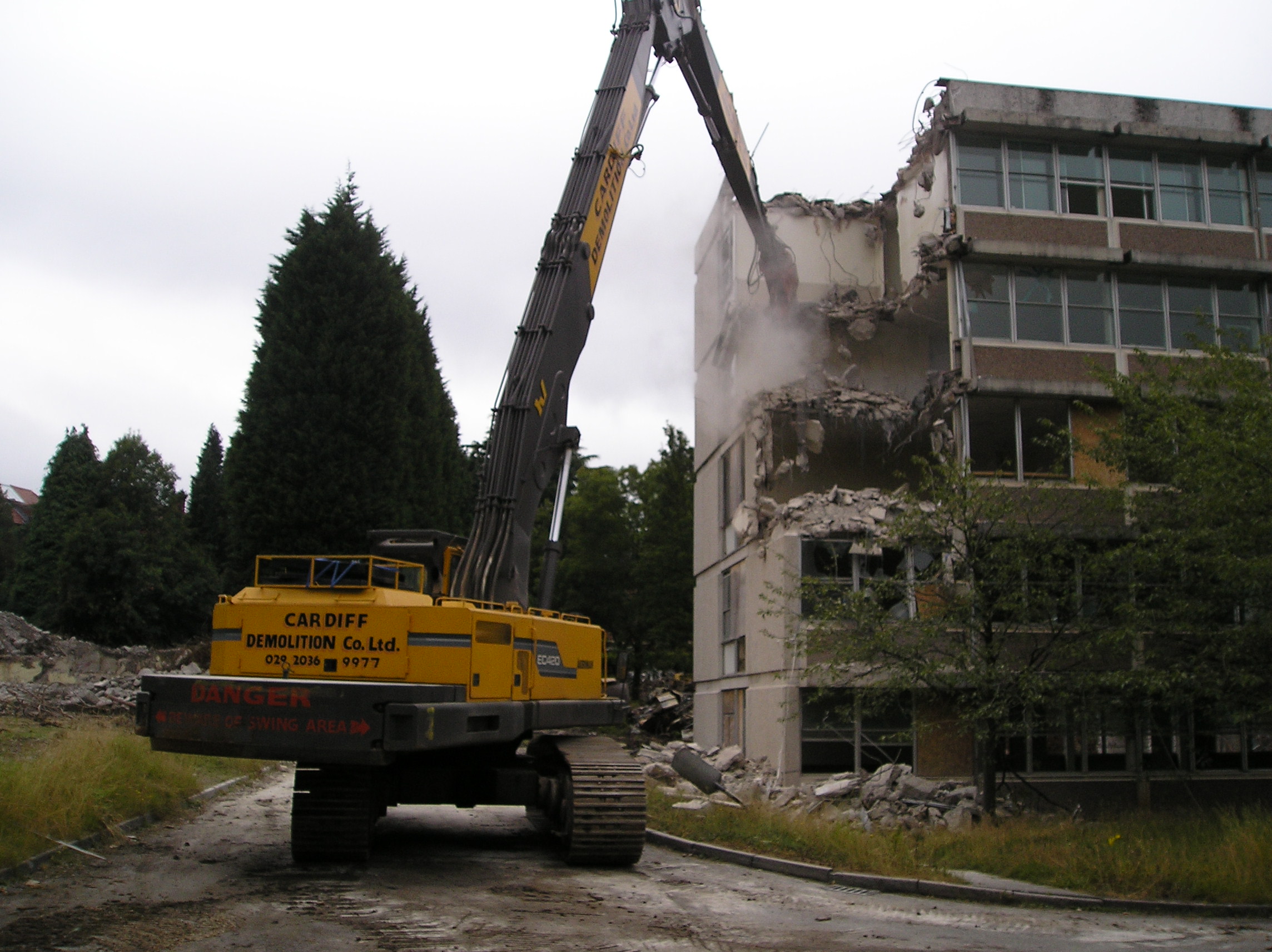
The Demolition
Demolition, dismantling and structural alteration are high-risk activities whose safe execution is complex and technical and where expertise is vital. They require careful planning and execution by contractors who are competent in the full range of demolition techniques. During demolition and dismantling, workers are injured in falls from edges and through openings and fragile surfaces. Workers and passers-by can be injured by the premature and uncontrolled collapse of structures or parts of structures and by flying debris. Effective traffic management systems are essential to avoid workers being put at risk of being hit by slewing or reversing plant. Dust, noise and vibration are also significant problems that need to be considered and controlled when planning any demolition work.
A systematic approach to the demolition process starts with responsible clients who have a legal obligation to appoint adequately resourced and competent duty holders such as structural engineers, planning supervisors and principal contractors. It is vital that clients also fulfil their legal obligation to provide information about the structure to be demolished and this often means commissioning a pre-demolition structural survey from a structural engineer. The expertise of a structural engineer must be used in the following cases:- in the design of a façade retention scheme;
- where there is doubt over the building’s stability;
- where there is doubt about the proposed method of demolition;
- where there is doubt about the capacity of the building to take loadings.
It is good practice to consult a structural engineer at the planning stage of demolition to avoid uncontrolled collapse. The principal contractor, who may also be the demolition contractor, must be able to co-ordinate and manage the health and safety issues during the demolition works. References must be sought and pertinent questions asked by the client to establish the credibility of the demolition contractor, especially if it is intended to appoint the demolition contractor as the principal contractor for the demolition phase of the work. A genuine and competent contractor will supply the name of the client for whom their last contract was carried out. They can be asked for information about the size and scale of the works, whether any problems were encountered, how the contractor performed and whether they would use the contractor again.
The client should also determine: whether the contractor employs a safety adviser or uses the services of a safety consultant and whether they have experience in the requirements of demolition; how often the safety adviser will visit the site; whether they will be provided with a copy of the site visit report to enable them to monitor the health and safety performance of their preferred contractor; what the contractor’s safety statistics are in respect of injuries, near misses and dangerous occurrences; whether they have been issued with any improvement or prohibition notices or been prosecuted (this information is available on the HSE website for limited companies, partnerships and sole traders); and whether it is their intention to use subcontractors and if so, for what elements of the job and how will the subcontractor be selected and managed. Ask the planning supervisor for their advice and input during the selection process. The gathering and provision of information, careful planning and effective site management are essential elements for safe and successful demolition and structural alteration.
The key to developing a safe system of work is choosing a work method that keeps people as far away as possible from the risks. Proposed working methods may be best detailed in a health and safety method statement. Everyone involved in the work needs to know what precautions are to be taken. They should be supervised so that these precautions are put into practice. It is essential that demolition is planned and carried out by trained demolition operatives under the supervision of a competent person. Supervisors should have knowledge of the particular type of demolition being carried out, its hazards and how to control them. In particular, they should understand and follow any demolition method statement and know of any particular demolition sequence required to avoid accidental collapse of the structure. Before work starts, the site should be surveyed for hazardous material and structural condition. This is the responsibility of the client and must not be left for the demolition contractor to organise.
Adequate toilets, washing facilities (including showers where necessary), rest facilities etc must be provided on site. Where there is more than one contractor on site, contractors may come to an agreement to share these facilities. Fire is also a risk, especially where hot work is being carried out, so make sure the necessary precautions are in place. During structural alteration it is vital that the fire plan is kept up to date as the escape routes and fire points may alter, and that an effective means of raising the alarm in the event of a fire is available.




